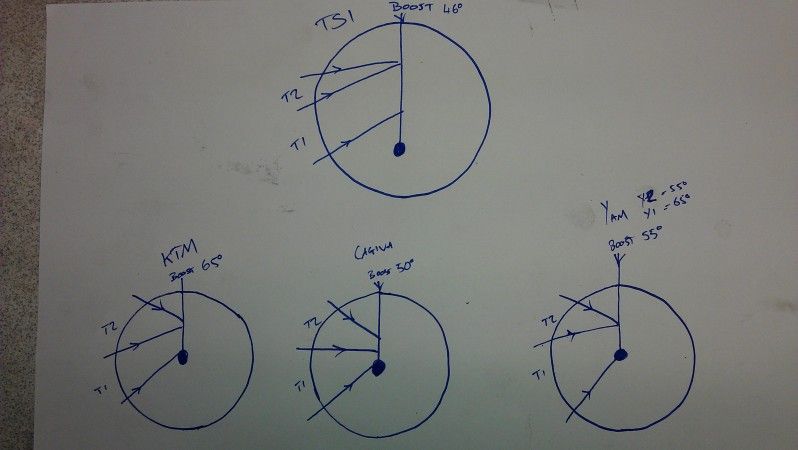drunkmunkey6969 wrote:Thought it might be an interesting topic (could be wrong!lol) to have a look at the problems associated with the boost port angle (amongst other things) on the well known TS1 cylinder. I'm not quite sure why it was designed this way, but in my humble opinion it is to the detriment of power and performance of the cylinder set up.
how do we know its of detriment until a collection of tests are carried out to confirm or deny,like so many tuners if confronted with the question "why do you do it like that" i doubt the answer will be based on actual results as theres often too many variables to test that youd never earn a living doing the day job ,if you buy a std ts1, fit it, base dyno test then change boost roof angles,analyse the results then publish them on here it would be really good of you but to make the test correct other factors would cloud the results ,in changing the angle could mean raising the boost changing its duration and also increases area and increase the duct volume so if a positive result was found then what gave the improvement?
The main purpose of the boost port at the back of a schnuerle-loop scavenged reed-valve cylinder is to scoop out the dead exhaust gasses in the cylinder bowl and push/mix the new charge into place. I examined several cylinders today, and they are fall into the traditional category of 50-65 degree angle for the boost port.
the boost ports primary benefit is adding extra transfer area but doing so in a manner that can be used effectively to purge spent charge from the rear cylinder wall to help cleanse the cylinder prior to the fresh charge arriving in an attempt to maintain its purity ,pushing the old spent charge up and over the new charge arriving from the mains and secondary transfers , we dont want to push and mix the charge into place
The pic below shows the cylinder circumference along with the angle of entry for transfers (T1 & T2). It also shows (the big dot in the middle) the sweet spot where the boost port angle directs the gasses in the cylinder head:
the black dot needs changing to a black line to the rear of the cylinder as reading thru the whole topic i cant see mention of how the port flows in a working engine (as in with a piston slid down the bore) the roof angle only has been discussed and no consideration to floor angle or in the case of a ts1 no floor angle exists appart from the piston face/crown edge which acts upon all transfers as a power valve changing opening and constantly changing flow direction which makes the boost into a multi angled port ,you also have to consider where the fuel is delivered from be it horizontally or vertically which on a std ts1 is a combination as is delivered horizontally from the reed and part vertically from the piston windows/skirt in a loop when operating in loop scavenge piston positions
The TS1 cylinder however is angled in at a very low 45-46 degrees. The other cylinders all work off centre plug/squish heads, which essentially means that the boost port will scoop straight up into the bowl and scoop it out nicely....where as the TS1 not only has a very shallow angle of boost port, but also uses an off-set squish/bowl....which means the main flow from the boost port misses the bowl completely. Thus....the main advantage of having a rear boost port is largely diminished.
In the image below i rested a metal shaft into the head resting at the angle of the boost ports direction:
Performance cylinders from big manufacturers come in at much steeper angles:
This suggests that the use of centre squish heads and the redirection of the boost port angle is of benefit when tuning TS1 cylinders.................................

as you say Dan an area of interest worth discussion and potential for improvement ,good topic



